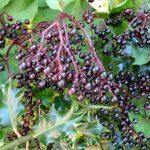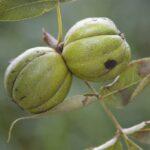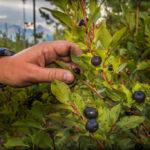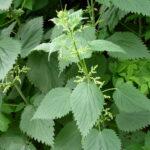Foraging for food in the forest can be a fun and educational experience. Not only are you able to connect with nature, but you can also discover new, tasty and nutritious ingredients to add to your meals. One type of food that is commonly found in the forest is edible roots
Wild Edible Roots in the Forest
Dandelion Root
Dandelion root is a commonly found root vegetable in the forest. Its taste is similar to that of a slightly bitter coffee and it can be consumed roasted or ground into a powder to make tea. Dandelion root is a rich source of vitamins A and C, iron, calcium and potassium.
Burdock Root
Burdock root is a long, dark brown root that can be found in the forest. Its taste is earthy and nutty and it is commonly used in Asian cuisine as a substitute for ginger. Burdock root is high in fiber and vitamins B1 and B2, as well as minerals such as magnesium, iron, and calcium.
Wild Garlic
Wild garlic is a type of garlic that grows in the forest and has a strong garlic flavor. The root of wild garlic can be cooked and used in a variety of dishes, such as soups and stews. It is also a good source of vitamins A and C, as well as potassium, iron and calcium.
Wild Onion
Wild onion is a type of onion that grows in the forest and has a strong, pungent flavor. The root of the wild onion can be used in a variety of dishes, including salads, soups and stews. Wild onion is a good source of vitamins C and B6, as well as potassium, iron and calcium.
Wild Ginger

Wild ginger is a type of ginger that grows in the forest and has a slightly spicy flavor. The root of wild ginger can be used in a variety of dishes, such as soups, stews and stir-fries. Wild ginger is a rich source of vitamins C and B6, as well as potassium, iron, and calcium.
Sunchokes

Sunchokes, also known as Jerusalem artichokes, are a type of root vegetable that grows in the forest and has a slightly sweet, nutty flavor. The root of the sunchoke can be roasted, mashed or fried and is a good source of fiber, vitamins C and B6, as well as potassium, iron, and calcium.
Cattail
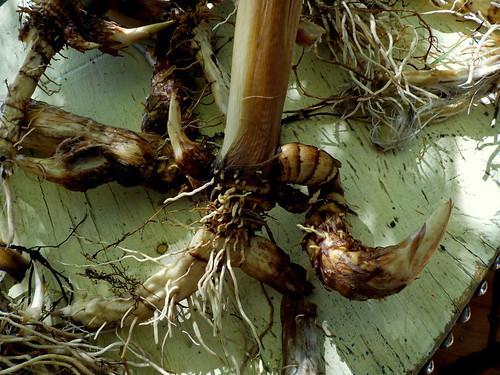
Cattail is a common plant found in wetland areas, such as near rivers, lakes, and swamps. The root of the cattail plant can be consumed and has a starchy, slightly sweet taste. It is often used as a survival food and is known to be high in carbohydrates, protein and fiber. The young shoots of the cattail plant can also be consumed, either raw or cooked, and are a good source of vitamins A and C. It is important to properly identify the cattail plant before consuming it and make sure it has not been contaminated with pollutants or other harmful substances commonly found in wetland areas.
Wild Yam
Wild Yam is another root vegetable that can be found in the forest. It is commonly used in traditional medicine for its health benefits, and is also known to be used as a natural remedy for menstrual cramps and menopausal symptoms. The root of the wild yam is starchy and has a slightly sweet, nutty flavor. It is a good source of fiber and vitamins C and B6, as well as potassium, iron and calcium. When foraging for wild yam, it is important to properly identify it and make sure it is safe for consumption as some species of wild yam can be toxic.
Arrowhead

Arrowhead is a type of aquatic plant that grows in freshwater habitats, such as rivers, lakes and swamps. The root of the arrowhead plant, also known as wapato, is edible and has a starchy, slightly sweet taste. It was a staple food for many Native American tribes and is still used as a survival food in some cultures today. The root of the arrowhead plant is a good source of carbohydrates and fiber, as well as vitamins A and C. When foraging for arrowhead, it is important to properly identify the plant and make sure it has not been contaminated with pollutants commonly found in freshwater habitats. It is also important to note that some species of arrowhead may have toxic look-alikes, so it’s always best to consult with a knowledgeable forager or expert before consuming any wild plants.
There are many delicious and nutritious root vegetables that you can forage in the forest. From the earthy and nutty flavor of burdock root, to the spicy flavor of wild ginger, there is a root vegetable for every taste preference. So next time you’re out in the forest, take a moment to look for these root vegetables and add a new, wild ingredient to your meals.
Keywords: foraging, forest, edible, root vegetables, dandelion root, burdock root, wild garlic, wild onion, wild ginger, Jerusalem artichoke, sunchokes, vitamins, minerals, flavor, nutrition, edible roots, wild edible roots, wild edible roots in the woods, wild edible roots in the forest, eating wild edible roots, edible roots in the forest, edible roots to forage, foraging edible roots
Check out our Novel Writing Workbooks
Check out Little Tree Food Forest for articles on food forests and homesteading.
Check out FoodieScapes for articles on growing, fermenting and preserving food
Check out StoryScapes.World for articles on writing.
Subscribe to our newsletter to get information delivered to your inbox on edible landscaping, growing food and medicinal plants, growing mushrooms, foraging, fermentation, food preservation, raising small livestock, and more.







